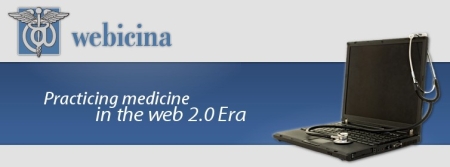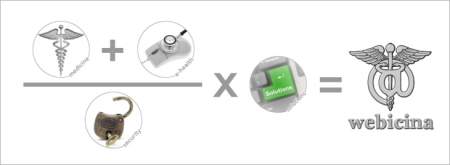The DNA Network |
| Phenotypes of the year [genomeboy.com] Posted: 24 Aug 2008 05:38 PM CDT |
| Posted: 24 Aug 2008 03:27 PM CDT I've been really busy of late. Over the summer I have been mentoring two students, Gloria who sadly left us for Danesh Moazed's lab (a great choice if you ask me) and Lesley who will be leaving next week to work in a lab at Duke. I have also been busy with the RNA Data Club - last week we had our first meeting outside of Harvard Med School, at the Whitehead Institute (thanks to Christina Mayr and other members of the Bartel lab). Next Month we'll be have over speakers from Pam Silver's group and our first Yalie, Navtej Toor from the Pyle Lab. Next week, Jenni and I are moving to a new apartment in Cambridgeport ... the crazy thing is that we'll be moving again next year ... most probably to Toronto! AND I have a hot new piece of data that I'm trying to work up. I want to have this result ready for a talk that I'll be giving at Columbia University on September 4th, but first I need to perform a couple of control experiments. The result of all this activity has been a lack of posts. As a result I haven't been able to blog about all the great papers that have been coming out in the last few months. Unfortunately these exciting new discoveries have been ignored by most science bloggers who seem to have no knowledge concerning the fastest advancing area of science today, cell biology. I've given each paper a one line entry (below the fold). Read the rest of this post... | Read the comments on this post... |
| From a Medical Blog to an Online Service: A bridge between physicians and e-patients [ScienceRoll] Posted: 24 Aug 2008 02:13 PM CDT I’ve been preparing to write this announcement for months. Scienceroll is almost 2 years old and I thought it’s time to launch my online service. I’ve written hundreds and hundreds of posts about the impact of web 2.0 on medicine, healthcare, medical education and communication. I’m always saying e-patients would change the way medicine is practiced and healthcare is delivered. And physicians of the 21st century must be qualified to meet their expectations. Now I’m building a bridge between physicians and e-patients. This bridge is called Webicina.com.
I will launch it really soon and hope it will help doctors enter the web 2.0 era. This equation may help how to describe the service I will provide.
And of course, your suggestions and thoughts are really welcome.  |
| Science bloggers meet in London [Reportergene] Posted: 24 Aug 2008 10:42 AM CDT Nature Network, in collaboration with the Royal Institution, is pleased to announce its inaugural science blogging conference: The science blogging community is growing rapidly and reaching larger audiences. At Science Blogging 2008, science bloggers from around the world will have the opportunity to meet and discuss the pressing issues in science, science communication, publishing and education. What can science bloggers do to maximise their impact? Can blogging contribute to scientific research and careers? How can blogs be used to help educate the public about science? What other emerging online tools will play a role in science? Readers and writers of science blogs, those who follow trends in online scientific communication and anyone else interested in learning more about science blogging will benefit from the discussions. |
| An Olympic Pondering Decathlon [Omics! Omics!] Posted: 23 Aug 2008 11:11 PM CDT Okay, my biannual stint of Olympic watching is about to conclude. A bunch of speculations suggested by this year's stretch, starting with the utterly unscientific and ending with more genomic oriented queries. 1) Having now watched two Olympics using a Digital Video Recorder, it's completely clear that having a few fast forward speeds is no way to navigate multi-hour recordings to find what you want. Surely there are better UIs for this! The thumbwheel on an iPod is one obvious choice, but there must be other ways. 2) The Summer games are blessed with multiple events which touch on multiple disciplines: the decathlon, heptathlon, modern pentathlon & triathlon. Why isn't there a true multi-discipline Winter sport? Biathlon is a glorious combination of two diametrically opposed skills -- racing and precision shooting -- and there is also the Nordic combined, but neither of these sample a wide range. How about this for a Winter hexathlon: A) 500m long-track speedskating B) 2500m long-track speedskating C) Downhill skiing D) Slalom E) 10Km X-C skiing F) ski jump (small hill) 3) I once contemplated attending a HUPO meeting in Beijing; atop an interesting program there was a post-conference trip option to tour the country. There were two issues: I'd have to foot my own travel expenses & I'd be in serious hot water at home for visiting the Wolong panda center solo. But, now I'd definitely go -- particularly if they replaced a typical dry scientific kickoff with another Zhang Yimou spectacular, I wouldn't hesitate! 4) As a kid I did occasionally have Olympic daydreams. I'm a bit over the hill now, but between athletes older than I such as Dara Torres and hearing that some countries will field just about anyone, perhaps I gave up too soon. If I could pick anything, it would be long track speedskating, the most graceful speed sport bar none. But, more realistically perhaps I could go for the 1500 meter freestyle swimming -- I'd estimate my time is off by only a factor of 3 -- perhaps with some regular training I can get that down to 2! 5) Of course, even with some extensive training I'd look pretty odd on the blocks -- I'm 5'8" and from what I can tell in the TV coverage, it's a rare swimmer who isn't a few inches over 6'. Clearly there are advantages to height in a large number of sports -- but I'm also clearly too tall for a shot at women's gymnastics (atop the other obvious issue). It would be interesting to see which sports have the highest and lowest dispersion in athlete height -- and what those patterns look like. What sport should I have chosen based only on my height? 6) During the Olympics, the world's tallest living woman died, after a life with many health difficulties. Clearly, there are limits to the advantages to height. What sport has the tallest athletes? 7) What more subtle anatomic characteristics might lead to athletic advantage? Differences in muscle fiber composition are an oft-cited one. A TV profile of superswimmer Michael Phelps claimed he is 'double jointed'. But what else. For example, are there subtle differences in some individual's lungs which lead to more efficient air exchange? Smoother surfaces on bone joints? 8) Diving lower, are there biochemical differences? Again, could there be differences in oxygen transfer or usage? Differences in energy metabolism? 9) If we did genome screens of the athletes, what SNPs would we find over-represented? How many of those would be 'obvious' and how many would lead to new genes which influence performance? Already there is at least one company offering genome scans to predict what sport you should stuff (er, steer) your kid into. 10) The sad story of Flo Hyman illustrates another aspect of selection for unusual body types: she died of a aortic dissection due to Marfan's syndrome, which probably also led to her tall, thin stature which was an advantage on the volleyball court. What other genetic variants have a dicey risk/reward trade-off in the athletic arena? And how many of these are a serious medical issue for regular folks? |
| Mountain Pine Beetle Genomics [Genome Blog] Posted: 23 Aug 2008 10:30 PM CDT A few nights ago I was in Red Deer, Alberta, to watch Dr.Janice Cooke speak at one of the regular Wednesday night science evenings at the Red Deer Museum and Art Gallery. Janice is the co-leader of our Tria Project which is looking into Mountain Pine Beetle system genomics. The beetle has chewed its way through much of British Columbia's pine forests and has already made a meal of an estimated million and a half Alberta trees. The relationship between the beetle, the pine tree, and the blue-stain fungus is not well understood by scientists or the forest industry. (who knew there is actually 9 fungi species at work) As I've discovered since we launched the project in January, the general public, media, and many policy makers do not realise that there is even a fungus at work in the epidemic. They are even more in the dark about the fact that the fungus is as fatal to the tree as the beetle, and may even be more damaging. So we jump at the chance to take the 'show and tell' on the road whenever we can. |
| You are subscribed to email updates from The DNA Network To stop receiving these emails, you may unsubscribe now. | Email Delivery powered by FeedBurner |
| Inbox too full? | |
| If you prefer to unsubscribe via postal mail, write to: The DNA Network, c/o FeedBurner, 20 W Kinzie, 9th Floor, Chicago IL USA 60610 | |


No comments:
Post a Comment